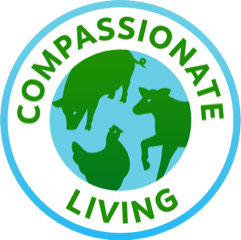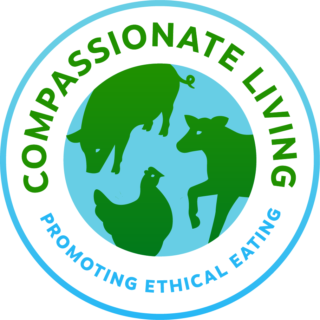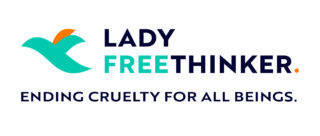Podcast Transcript
Hope
Welcome to the Hope for the Animals Podcast, sponsored by United Poultry Concerns. I’m your host, Hope Bohanec. You can find all our past episodes at our website, HopefortheAnimalsPodcast.org.
This is the ninth installment of a series that we’re calling the Reason for Vegan Series where I expose the truth about a specific aspect of the animal agriculture industry and help to answer the question of why we are vegan. On today’s segment, I’m going to talk about fish and the fishing industry. This is the second part of a two-part series on fish within the larger Reason for Vegan Series. So number 8 and 9 are dedicated to fish. In the last one, number 8, I talked about the emotional lives of fish and the latest science on their cognition and sentience. If you haven’t heard that one, I encourage you to check it out. You can listen to it after this one, the order doesn’t matter. But in this segment, I’m going to talk about the fishing industry and how we kill fish.
When vegan educators talk about the mass killing of fish it’s usually in the context of environmental impact, and that is certainly important as we are wiping out what was once a boundless and abundant amount of fish in the oceans and that massive decrease is having detrimental effects on our oceans and on our planet. I am going to talk about that, but what I want to focus on is the way we capture and kill fish, and why it is unethical and cruel. So in the last segment on fish, number 8, I established that science has overwhelmingly come to the conclusion that fish feel pain and suffer when they’re physically harmed. They suffer in much the same way as any other animal or avian or human does, and they also experience fear and anxiety in much the same way. So please keep that in mind as we go forward. So let’s get into our discussion about the fishing industry. And just a note, you can say, “fish” or “fishes.” Both are acceptable, and I will use them interchangeably.
Fish have zero federal protections in the United States. They are not covered by the Animal Welfare Act or by the Humane Methods of Slaughter Act. These laws are not comprehensive in any way because there’s still a ton of suffering under these so called “protections,” but at least it’s something. It’s acknowledgement that animals are suffering in the industry and some attempt to minimize it. But fish are completely exempt, as are birds, for that matter, chickens and turkeys as well. Most state anti-cruelty laws don’t include fish either so they are really one of the least protected animals on the planet with no laws regarding how they are caught or treated or killed.
The number of fish killed each year far exceeds the number of people who have ever existed on Earth. I’m going to say that again because it is unbelievable to think about. The number of fish that we kill each year on this planet far exceeds the number of people who have ever existed on Earth. It’s estimated that 100 billion farmed fish are killed globally every year. And then, about another 1 to 3 trillion fish are killed in the wild every year. These numbers are just staggering. It’s a brutal mass killing on an unimaginable scale.
The technology has gotten so advanced there’s sonar and satellite navigation and GPS and depth sensors and detailed maps. The fishing industry will send out spotter planes and helicopters that will go out and search for large schools of fish and then radio back to the boats where the fish are. Humans are the most dangerous and deadly predator on this planet, and the fish have nowhere to hide. $35 billion in US government subsidies goes to the fishing industry, each year, which is a travesty and a waste.
I want to get into some of the methods in which the industry kills fishes. One of the most common fishing methods now is netting fish where deep sea trawlers, these industrial boats, go far out deep into the ocean and drop miles and miles of netting. Those fishing nets scoop up just everything in their path, non-target fish, marine mammals, seabirds, and everything gets trapped in the nets and killed. They haul all of these sea creatures onto the boat decks and most of the fish suffocate to death if they’re not crushed by the weight of the other fish. It’s such a violent process. Many fish are injured. The suffocation from being taken out of the water is similar to us drowning. It’s a prolonged, scary way to die. It can take up to four to five minutes, and when you are in severe distress and intense pain, that’s a very, very long time.
Something most people don’t know is that deep sea dwelling fish can suffer from decompression from being netted. So what decompression is, many fish have gas-filled swim bladders that function like a buoyancy control. The bladder expands when they want to go up closer to the surface, and then the bladder deflates so that they can dive down deep. But it takes time when they’re swimming up and down for this bladder to increase and decrease in size. When fish are hauled up in these nets from deep in the ocean very quickly, it can in engorge their bladder, filling it too fast, too quickly, and it can press against the other organs causing organs to erupt or collapse. There have been numerous studies done on the injuries that are sustained by decompression when fish are caught and pulled up quickly both commercially and recreationally. It’s a gruesome list of injuries that can occur. There can be esophageal inversion which is the esophagus turning inside out and coming out of the mouth. Their eyes can bulge out of their sockets. They can have internal hemorrhaging, organ tearing, organ damage, or prolapse where the rectum turns inside out and emerges from the body. I will remind us that fish have been scientifically proven to suffer and feel pain, just as any animal does.
Another method of fishing is longline fishing. Longline fishing is different than netting. Longline fishing is where fishermen take a very long line, just as it’s named and up to 60 miles long, on the surface of the water, and about every four to six feet there’s a line that drops from the main line that has a bait and hook under the water. There can be up to 2500 hooks along the line. These lines are really long. Once the fish eats the bait and is caught on the hook, they’re not immediately pulled out the water like it would be with recreational fishing on a fishing pole. No, they are left there for hours and they’re struggling and pulling and wherever the hook has hooked into their body, whether it be their stomach or their esophagus or their throat, they’re pulling and fighting that hook trying to get free. That can go on for hours and hours. Sometimes they’re eaten by predators. They’re unable to escape predators; they can’t swim away. They’re just helpless there. It’s awful. And they can linger like that for hours or even days. If they survive all that, then they’re hauled onto the boat to suffocate out of the water. Longline fishing causes incredibly prolonged suffering and death.
Some very unfortunate fish are still alive when they make it to the knife and are being cut up alive. There was a study done on fish slaughter and it found that the degree in which a fish suffers when being cut, either sliced to the gills or being decapitated and bleeding out, the degree that a fish suffers, can be considered very high by this study from being cut up alive.
So some other ways that fishes are killed: one is electrocution, the other is being put on ice and left to die, which is prolonged suffocation. These two methods cause immobility before a loss of sensibility. The fish can’t move. She’s frozen and paralyzed from the electrocution or from the freezing cold of the ice, so it appears that she’s not suffering, but that’s not the case. She’s still feeling everything. A similar thing happens with chickens when they are slaughtered. They are put through an electrified “bath” where electrified water is sprayed on their bodies to release the feather follicles so feathers are plucked out more easily. It renders the chicken paralyzed but they still feel everything. They’re still feeling the throat slitting, and all that’s happening to them, even though they can’t move. This has to be so frightening, I can’t even imagine. You wouldn’t be able to move or struggle against the pain and what’s happening to you and your body, but you’re still feeling everything. It’s got to be horrific.
I also want to talk about fish farming. Fish farming is getting more popular. Most restaurant fish are from fish farms. Fish farms concentrate 1000s of fish in tanks about the size of a small swimming pool. I’ve seen that before. I’ve been to fish farms long ago. What you notice as you’re approaching is these pools and these small tanks in a row next to a large body of water. They always build them on lakes or the ocean and that’s where they get their water. You see these tanks, and they’re just brown. The water looks mucky and disgusting. And as you’re getting closer, you realize that the water is really moving. I mean, there is a lot of movement in this mucky water, but you can’t see through it because it looks like mud. But you realize, once you get up close enough, that there are just a ton of fish. They are on top of each other, and these poor fish are so crammed in there. They just can’t swim in a straight line. They’re just swimming all on top of one another. Then you look at the water that they’re next to, like the lake or the ocean, and it’s clear and clean and looks like normal water. These farms are really awful.
This intensive farming of fish creates the same problems when you crowd together mammals for animal farming on land. These unnatural conditions build up the concentration of waste and it makes these fish sick. Fish farms are notorious for dumping an arsenal of chemicals and antibiotics and other drugs in the water to try and keep the fish healthy enough until they are killed. So there’s concentrated contaminated wastewater with feed and chemicals that’s seeping into the lake or the ocean or whatever the body of water, and it’s killing everything around the fish farms. In Scotland, the Scottish Environmental Protection Agency force salmon farms to relocate every 15 years because of the pollution that they create.
Sea lice is another huge problem in fish farming. Sea lice is not a huge threat in the wild, but they thrive in fish farming because the next host fish is only inches away and really easy to spread. Sea lice eat away at the flesh of the fish, so their flesh gets eaten away and kind of rots away around their eyes and faces. It can be extremely painful. In fish farming sea lice is so common that a 10-30% loss is considered acceptable and expected. So many fish in fish farming are suffering from the distress of advanced cases of sea lice.
I want to talk about the environmental impact of all this because we are depleting our oceans of life. A few statistics that I’ll talk about: seven of the top 10 marine fish species are now classified as fully exploited or over exploited, nearly 90% of all large predatory fish in the ocean are now gone from numbers that we had just 100 years ago, and because of fishing we’re also seeing a 62% drop in seabirds and a 60% drop in coral reefs. The UN Food and Agriculture Organization released a study in 2008 called the State of the World Fisheries and Aquaculture and they concluded that 80% of all marine fish stocks, that’s the fish we eat, are currently fully exploited, over exploited, or depleted, and things have only gotten worse from then.
Circling back to the netting of fish and the miles of netting, that netting hits the bottom of the ocean at times and runs along the bottom, just clear cutting the ocean floor, destroying coral, kelp, seaweed, sea fans and other plant life that provide the protection and spawning grounds for fish. It all gets destroyed; that habitat just gets completely destroyed. And for netting and longline fishing, they don’t only catch the fish that are targeted to sell which is only about 20% of the catch. Only about 20% of what is caught can be sold, and the rest is thrown back dead. The industry calls this “bycatch.” Activists and I call it “by-kill” because there are no survivors. More than 7 million tons of by-kill is caught every year in these nets on these long lines. Sea animals like the non-target fish species too small to sell, but also sea turtles, dolphins, whales, sharks, and other endangered species, sea stars, eels, Albatross, and other seabirds. For every pound of shrimp netted in the Gulf of Mexico, four pounds of by-kill is destroyed and thrown back overboard, dead.
I had an idea for a video that would be really impactful. I wish someone would make it. I can’t. I don’t have the capability, although my technical skills have gotten a lot better in the last seven months in a lot of different aspects, especially audio. But I couldn’t make this video. I would love someone to do it. The idea would be that someone would be sitting down to a plate of seafood at a large table and as they’re eating the seafood, all the other animals that were killed would also lie on the table, just for this one plate of food. So there would be maybe a dolphin laying there, or seabird, like a seagull, a bunch of sea stars, or a sea turtle, just to show the waste of the industry. And, of course, the fish that is on the plate is just as important and shouldn’t be killed either. This would demonstrate what kind of absolute waste happens in this industry.
With these nets, if there is a hole in the miles and miles of netting which can’t be repaired or it’s damaged in some way, they don’t haul it back to land and dispose of it properly. No, they just cut it loose and discard it into the ocean. Fishing gear is polluting our oceans on a massive scale. And there’s so many animals that get caught in these nets and they get tangled or strangled or unable to swim or marine mammals are unable to surface for air when they’re caught in these drifting fishing nets. It’s called “ghost gear,” and it’s just deadly to marine animals. Fishing nets are made from nylon and nylon is plastic. And it’s great that we hate straws and that we have anti-plastic campaigns against straws and trying to use more compostable straws, and that’s wonderful but that plastic is just a small percentage of the plastic in the ocean. The majority of plastic waste in the ocean is from fishing gear. If we really want to help rid our oceans of plastic, we need to stop eating fish.
Another aspect that is little known is that there is a ton of fish that’s wasted on feeding farmed animals. One-third of the world’s fish catch is not eaten by humans. Much of that fish is fed to farmed animals. In fact, more fish are consumed by land animals that we kill and eat in the US than by the entire human population of all the countries of Western Europe combined. What an incredible waste.
I do want to touch on the health issue because it seems that this is one of the main reasons that people keep fish in their diets, even when they’ve cut out other meats. Fish are seen as “the healthy meat.” But that is just not the case. There was a declaration issued by the world’s leading mercury scientists and called for a worldwide general warning to the public, especially to children and women, because they concluded that the risk posed by fish contaminated with mercury. The declaration confirms that eating fish is the primary way most people are exposed to highly toxic methylmercury, and that exposure to this toxin now constitutes a public health problem. Eating fish is the leading source of dietary mercury, but not only mercury, there’s also dioxins, neurotoxins, arsenic, DDT, PCBs, PDBE’s, heavy metals, prescription drugs, plastics, parasites, just a wide array of other toxins. The oceans are polluted, and so are the fish. It’s sad, but it’s very true.
They also have what all meat has and that is saturated fat and cholesterol, which increases your risk of chronic degenerative diseases. Of course what everyone is concerned about now is getting the omega-3 fatty acids that’s found in seafood, but the potential to get a big dose of toxins with the omega-3 is very likely and counters any beneficial effects. If you’re really concerned about it, then there are numerous plant sources of omega-3s, as well as microalgae-based supplements and omega-3 supplements. You can certainly get a plant sourced omega-3 supplement.
If this is still a concern for you and you want to know more about the health issues with fish, I suggest going to NutritionFacts.org. Dr. Michael Greger, he’s just a wealth of good scientific information regarding this issue and many other health issues. He presents the information in these really easy to understand short videos and podcasts, so I really suggest going to NutritionFacts.org if you want to learn more about the health aspect.
It’s also worth mentioning that the fishing industry is notorious for slave labor. Human trafficking and slavery is rampant in the fishing industry. I think consumers of fish have no idea. People are tricked into thinking that it’s legitimate work or they’re just kidnapped and they’re kept on these fishing vessels in inhumane conditions for months, sometimes years, out at sea, and they’re forced to work or they risk being beaten or starved or thrown overboard. Vegans are often accused of only caring about animals. Well, if you care about people, which most all vegans certainly do, this alone would be reason enough to boycott this horrible industry.
I’m going to wrap it up now, and some resources that I mentioned in the last segment, I’ll mention again here. I highly recommend the book, What a Fish Knows, by Johnathan Balcombe, and also the organization Fish Feel has a lot of great in-depth information. Their website’s really easy. It’s FishFeel.org. I’ll have links to both of these in the show notes. There’s also some great Facebook groups if you’re on Facebook, there’s Let Fish Live, the Anti-Fishing Campaign, Stop Eating Fish/Save the Planet. If you just do a search for “fish” and “vegan” in Facebook groups, I’m sure you could find some of them.
Thank you so much for listening to the Hope for the Animals Podcast. If you feel that this was important information, please share this podcast with your friends on your social media sites, give us a positive rating or review wherever you listen to your podcasts, and if you haven’t yet, please do listen to the other part of this two-part fish segment. That would be number 8 in the Reason for Vegan Series. Thank you for your compassion and for caring about fishes. Please think about fish, talk about fish, don’t eat fish, and live vegan.




